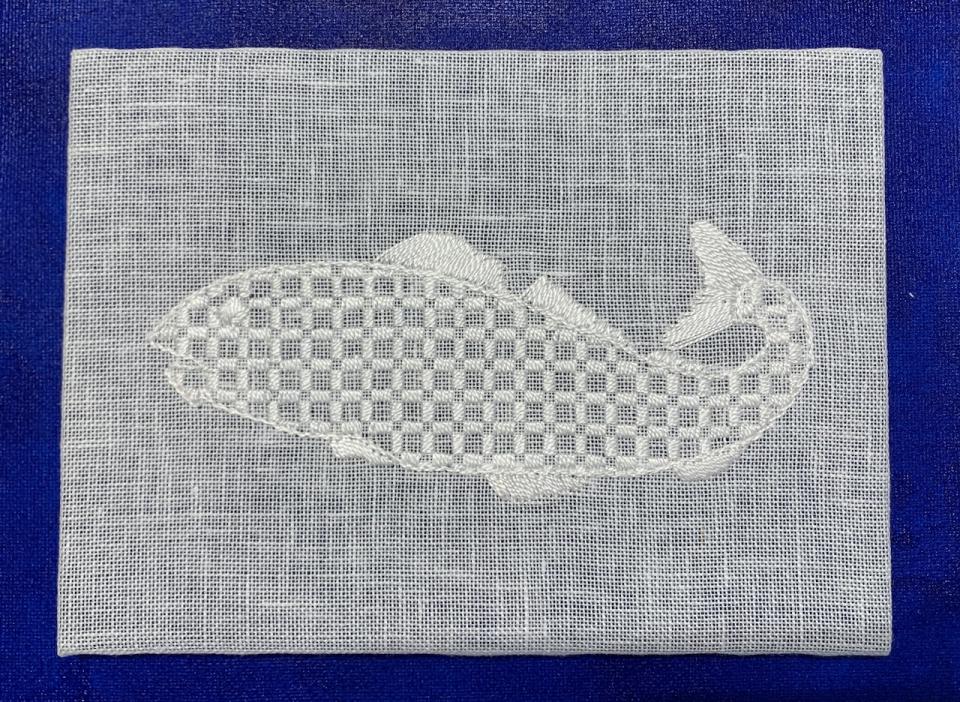Does it get any more Newfoundland than this embroidery show about cod?

Newfoundland and Labrador is known for both its fishery and folk art, but the two aren't typically intertwined.
The School of Cod embroidery exhibit in St. John's is changing that.
"The idea was we were going to have a binder with cod … cod of course, because we're Newfoundland — stitched in all these different techniques," said St. John's Guild of Embroiderers president Anne Rowlands. The binder was meant as a way to illustrate various embroidery stitches, techniques and styles.
But after the group was approached about housing an artist in residence, Rowlands fished for an idea — and ended up turning that small binder into the sprawling 40-piece exhibit now on display.
The array offers a glimpse of various stitching styles — some, like the Mountmellick technique, which originated in Ireland, more rustic than others.

This is one of 40 renditions of a cod drawing on display at the St. John's exhibit. The Mountmellick style typically uses heavier fabric and white thread. (Heather Barrett/CBC)
"It was used with very heavy fabric and very heavy thread, almost like twine, that you would use to tie up packages," said the guild's vice-president, Mary Pippy.
"At the time, that's really all that they had."
Guild members all stitched the School of Cod works from the same source drawing, but each applied a different style, Pippy explains.
The show includes 40 renditions of the original cod portrait — and that barely scratches the surface of the diverse array of embroidery techniques that artisans can employ, Rowlands said.

Guild members young and old contributed to the show. (Heather Barrett/CBC)
One of them shows off a method called stumpwork, which was popular in the 1700s and has only recently been revived.
"It's a raised technique — you can make it very dimensional," Rowlands said, adding it lends a certain chubbiness to the cod on display.
Another uses needle painting to stitch in a "realistic way," Pippy said, portraying the colours and textures you'd expect to see on a cod.

Some works, like this piece, use a more realistic embroidery technique. (Heather Barrett/CBC)
Some techniques can take many dedicated hours, and usually a magnifying glass for the guild's older members. But Rowlands says the group has taken on fresh faces in recent years — some of them as young as 24.
"We get to share back and forth. Some of their ideas, some of us have some good technique," she said.
"We start putting it together and some really amazing things are coming out."
The School of Cod exhibit runs until March 24 at the Newfoundland and Labrador Craft Council gallery on Water Street.
Download our free CBC News app to sign up for push alerts for CBC Newfoundland and Labrador. Click here to visit our landing page.


